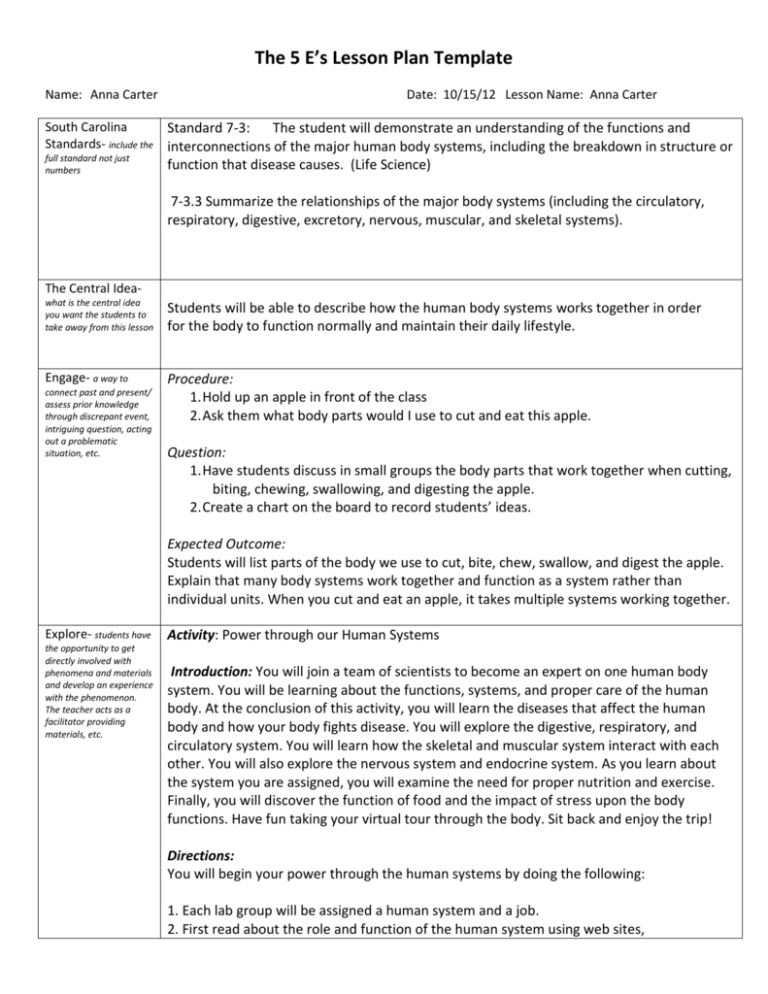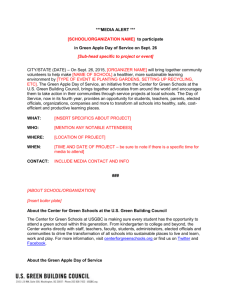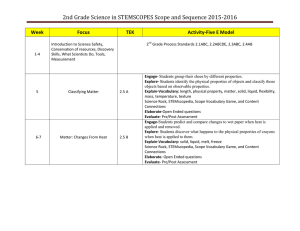Human Body Systems Lesson Plan (Carter)
advertisement

The 5 E’s Lesson Plan Template Name: Anna Carter South Carolina Standards- include the full standard not just numbers Date: 10/15/12 Lesson Name: Anna Carter Standard 7-3: The student will demonstrate an understanding of the functions and interconnections of the major human body systems, including the breakdown in structure or function that disease causes. (Life Science) 7-3.3 Summarize the relationships of the major body systems (including the circulatory, respiratory, digestive, excretory, nervous, muscular, and skeletal systems). The Central Ideawhat is the central idea you want the students to take away from this lesson Students will be able to describe how the human body systems works together in order for the body to function normally and maintain their daily lifestyle. Engage- a way to Procedure: 1. Hold up an apple in front of the class 2. Ask them what body parts would I use to cut and eat this apple. connect past and present/ assess prior knowledge through discrepant event, intriguing question, acting out a problematic situation, etc. Question: 1. Have students discuss in small groups the body parts that work together when cutting, biting, chewing, swallowing, and digesting the apple. 2. Create a chart on the board to record students’ ideas. Expected Outcome: Students will list parts of the body we use to cut, bite, chew, swallow, and digest the apple. Explain that many body systems work together and function as a system rather than individual units. When you cut and eat an apple, it takes multiple systems working together. Explore- students have the opportunity to get directly involved with phenomena and materials and develop an experience with the phenomenon. The teacher acts as a facilitator providing materials, etc. Activity: Power through our Human Systems Introduction: You will join a team of scientists to become an expert on one human body system. You will be learning about the functions, systems, and proper care of the human body. At the conclusion of this activity, you will learn the diseases that affect the human body and how your body fights disease. You will explore the digestive, respiratory, and circulatory system. You will learn how the skeletal and muscular system interact with each other. You will also explore the nervous system and endocrine system. As you learn about the system you are assigned, you will examine the need for proper nutrition and exercise. Finally, you will discover the function of food and the impact of stress upon the body functions. Have fun taking your virtual tour through the body. Sit back and enjoy the trip! Directions: You will begin your power through the human systems by doing the following: 1. Each lab group will be assigned a human system and a job. 2. First read about the role and function of the human system using web sites, and your textbooks. Then use your notes guide to take notes on what you read. 3. Each person that has the same human system is assigned one of the following jobs: A. Doctor- research a human system that you are assigned focusing on one disease that affects the human system B. Physical Trainer-you will concentrate on the human system that is assigned to you. You will find exercises that affect the human system C. Dietitian-You will research the foods that will increase the health of the human system D. Graphic Designer-you will find graphics and images, with a graph, or diagram about your assigned system followed by a description about your graphic. E. Integrator-you will explain how the system you are researching relates to the other systems. 4. Finally, each human system team will present their human system orally to the class with a poster or power point or some other representation. Explain- the learner begins to put the abstract experience through which she/he has gone through into a communicable form. This is where the teacher can further assess misconceptions of knowledge. Students should use the information presented by the group presentations and write a one page summary explaining how the systems of the body work together. Elaborate- the Question Students and Lead Discussion students expand on the concepts they have learned, make connections to other related concepts, and apply their understandings to the world around them. Evaluate- an on-going diagnostic process that allows the teacher to determine if the learner has attained understanding of concepts and knowledge. Evaluation and assessment can occur at all points along the continuum of the instructional process. Challenge students to explain how the skeletal system may be affected if it did not function properly and the body couldn’t maintain homeostasis. Which two main body systems work together to allow a body to move? What would happen if one of these systems were damaged and the body could not maintain homeostasis? The students will be assessed on the completion of the information included in the lab station research and presentation. The one page paper will be graded formatively with feedback in order to assess if students are grasping the concept that human body systems work together. Students will also be assessed through questioning throughout the lesson and after to assure understanding. Students will also be assessed on their ability to critically think and work collaboratively. Adapted from: tp://summit.cecs.ucf.edu/





